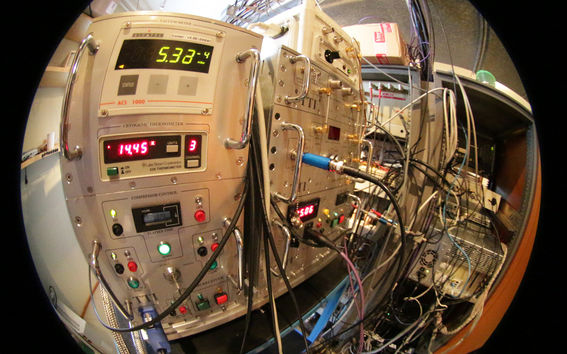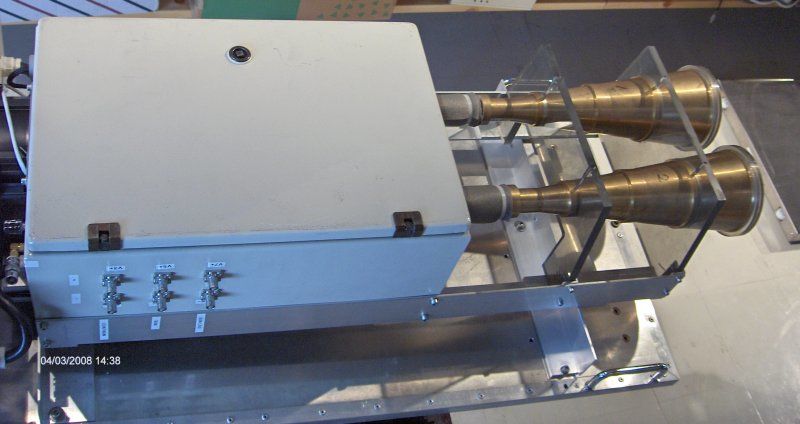Metsähovi's main receivers

Better sensitivity can be achieved by using modern technology components such as HEMT based low noise amplifiers, cryogenic cooling, and computer aided simulation and design. At the same time the receiver needs to be very stable to enable sufficiently long integration times of the weak signal. In VLBI receivers an important feature is the phase stability because this technique relies on the phase coherence of several signal acquisitions.
Currently Metsähovi Radio Observatory operates the following receivers. Detailed information can be obtained from Metsähovi.
|
Receiver |
Signal freq. [GHz] |
IF freq. [GHz] |
Polarization |
Trec [K] |
|
22 GHz Continuum |
21.0-22.0/22.4-23.4 |
0.2-1.2 |
Linear |
270 |
|
22 GHz VLBI |
21.980-22.480 |
0.5-1.0 |
LCP/RCP |
60 |
|
37 GHz Continuum/Solar |
35.3-36.3/37.3-38.3 |
0.5-1.5 |
Linear |
280 |
|
Geo-VLBI |
8.15-8.65 2.21-2.35 |
0.5-0.98 0.68-0.82 |
RCP |
100 |
|
43 GHz VLBI |
40-45 |
8.5-11.5/0.5-1.0 |
LCP/RCP |
100 |
|
84-98 GHz VLBI |
84-98 |
0.5-1.0 |
LCP/RCP |
120 |
|
MCA |
4-8 |
TBD |
? |
? |

Metsähovi Radio Observatory
- Published:
- Updated: